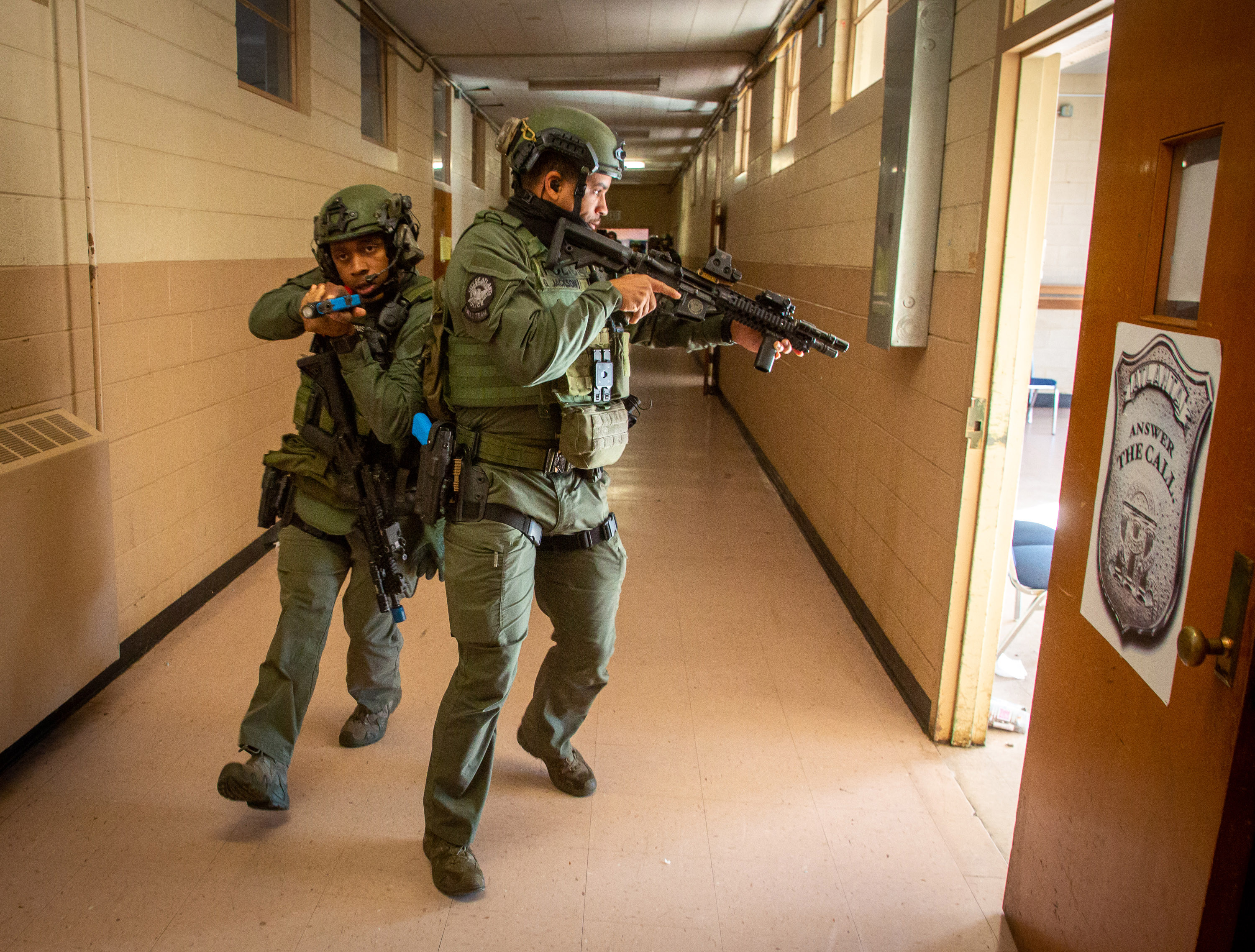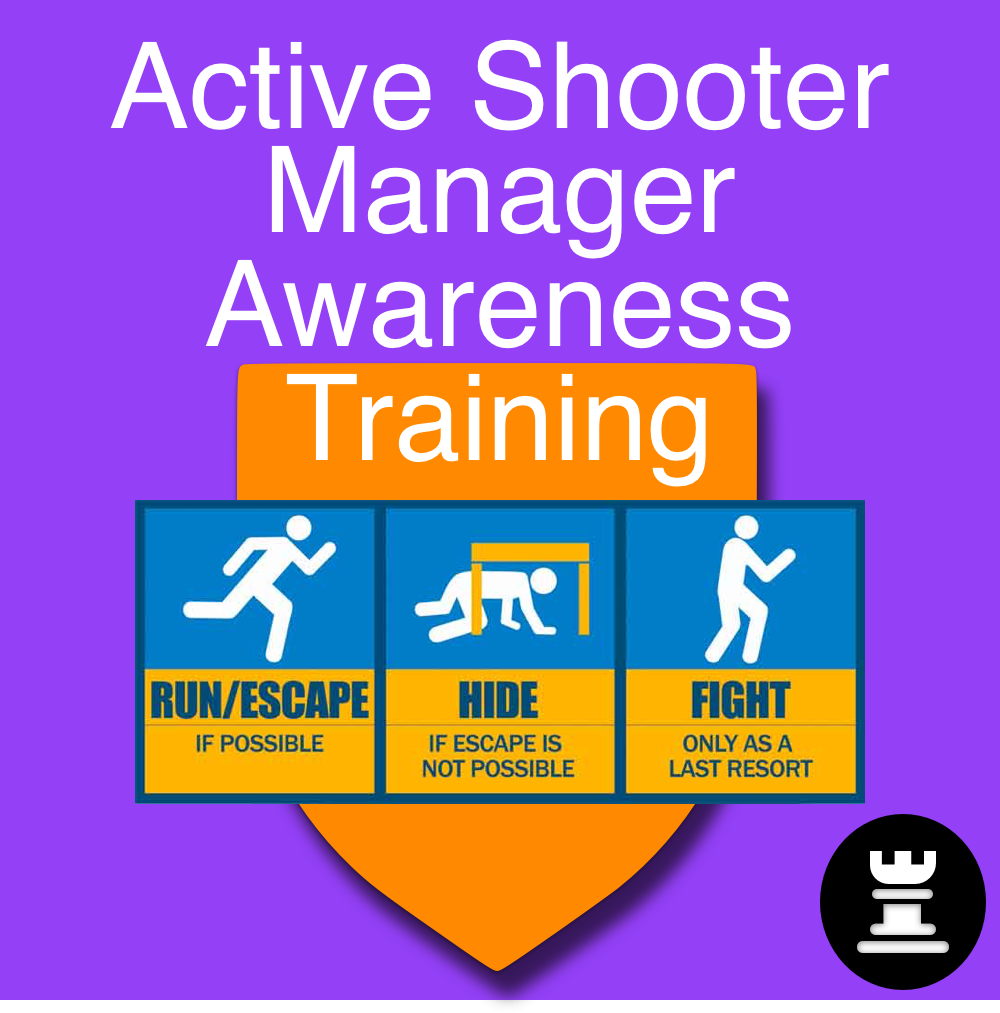Best Practices for Implementing Active Shooter Training in Your Company
Best Practices for Implementing Active Shooter Training in Your Company
Blog Article
Applying Active Shooter Training: Best Practices for Creating a Safe and Prepared Neighborhood Setting
As communities challenge the disturbing truth of active shooter events, the application of comprehensive training programs ends up being important. What are the important elements that can change a conventional training program into a durable design for community resilience?

Understanding the Demand for Training
In a period noted by enhancing incidents of physical violence in public spaces, recognizing the requirement for active shooter training has actually never ever been much more vital. The prevalence of mass capturings across various environmentsâEUR" such as colleges, work environments, and purchasing centersâEUR" highlights the urgency for individuals and companies to be gotten ready for such emergency situations. Active shooter situations can unfold quickly, leaving little time for people to react properly. For that reason, comprehensive training efforts can equip individuals with the knowledge and abilities to react decisively.
Training cultivates a feeling of empowerment and readiness, enabling people to feel more safe in their environments. The advantages of energetic shooter training prolong past immediate reaction; they consist of enhancing interaction procedures and boosting overall security procedures within companies.
Trick Elements of Effective Programs
Reliable active shooter training programs incorporate a number of crucial parts that boost preparedness and action capacities. Comprehensive educational program development is essential, ensuring that training material is relevant, evidence-based, and customized to the specific demands of the organization or area. This includes recognizing the dynamics of energetic shooter occurrences and the mental influence on people included.
Second, realistic training scenarios should be used to replicate prospective circumstances, permitting individuals to practice decision-making and action strategies in a controlled atmosphere. These drills facilitate muscle mass memory and construct confidence among individuals.
Third, a concentrate on interaction procedures is crucial. Establishing clear lines of communication among law enforcement, emergency situation responders, and individuals ensures collaborated actions throughout an occurrence. Normal updates and correspondence course aid keep interaction pathways clear and efficient.
4th, continuous assessment and responses mechanisms must be integrated right into the training program - active shooter training. Evaluating the effectiveness of training via participant comments and efficiency metrics permits continual improvement
Finally, fostering a society of security and preparedness within the area urges alertness and proactive actions, making certain that individuals are not only trained but likewise participated in keeping a safe atmosphere.
Engaging Area Stakeholders

To effectively engage these stakeholders, it is necessary to communicate the goals and benefits of the training. Holding informational sessions can aid make clear the training's function, address problems, and lay out the duties each stakeholder may play. Additionally, producing a stakeholder advisory committee can promote ongoing discussion, allowing for diverse viewpoints and insights to be incorporated right into the training program.
Structure relationships with neighborhood leaders and companies is additionally vital. Their support can enhance outreach initiatives, rise engagement, and guarantee that training is customized to the unique requirements of the area. Additionally, stakeholders can help in disseminating info and resources, enhancing the message of safety and readiness.
Ultimately, involving community stakeholders not just reinforces the training initiative however also grows a feeling of possession amongst residents, resulting in a more resistant and informed neighborhood with the ability of responding properly to prospective dangers.
Educating Distribution Approaches
Using a range of training delivery approaches is necessary to suit the varied discovering styles and demands of individuals in active shooter training programs (active shooter training). Effective training can take numerous types, including talks, hands-on simulations, on the internet modules, and interactive workshops. Each method offers a special function and can improve the overall understanding experience

Online components supply versatility and ease of access, enabling participants to learn at their very own speed. These can include video clips, quizzes, and conversations to evaluate understanding. Interactive workshops motivate group discussions and click now analytical, promoting team effort and interaction abilities.
Incorporating a mixed strategy that combines these methods not just improves the training experience but also makes certain that individuals are better prepared to respond successfully in case of an active shooter situation (active shooter training). By attending to various discovering preferences, companies can create a much more informed and responsive neighborhood
Constant Examination and Renovation
Normal analysis and improvement of energetic shooter training programs are essential to preserving their significance and efficiency. As risks develop, so should the methods and techniques used in training. Continual analysis makes certain that training web content mirrors the current knowledge on energetic shooter occurrences, including lessons found out from current occasions and changing for emerging trends.
To facilitate this procedure, companies need to develop comments systems that include participant assessments, professional evaluations, and case debriefs. Collecting data on participant efficiency during drills and exercises is important, as it highlights locations requiring enhancement and informs future training sessions. Additionally, involving with regulation enforcement and emergency situation responders can give important insights into the usefulness and applicability of training procedures.
On a regular basis arranged reviews of training products and methods should be mandated, cultivating an atmosphere of innovation and versatility. Organizations must additionally encourage a society of continuous understanding, where personnel really feel empowered to recommend adjustments based on their experiences. By devoting to constant evaluation and enhancement, organizations not just enhance the efficiency of their active shooter training programs yet also enhance their total commitment to safety and security and preparedness within the area.
Final Thought
In final thought, effective execution of energetic shooter training requires a comprehensive strategy that focuses on neighborhood engagement and practical simulations. By developing tailored educational programs, incorporating diverse training approaches, and cultivating collaboration among stakeholders, neighborhoods can boost preparedness. Constant examination and responses mechanisms are vital for adjusting programs to arising risks, consequently reinforcing total safety. Ultimately, a these details commitment to continuous training and enhancement grows a society of vigilance and readiness, ensuring a safer atmosphere for all area participants.
Report this page